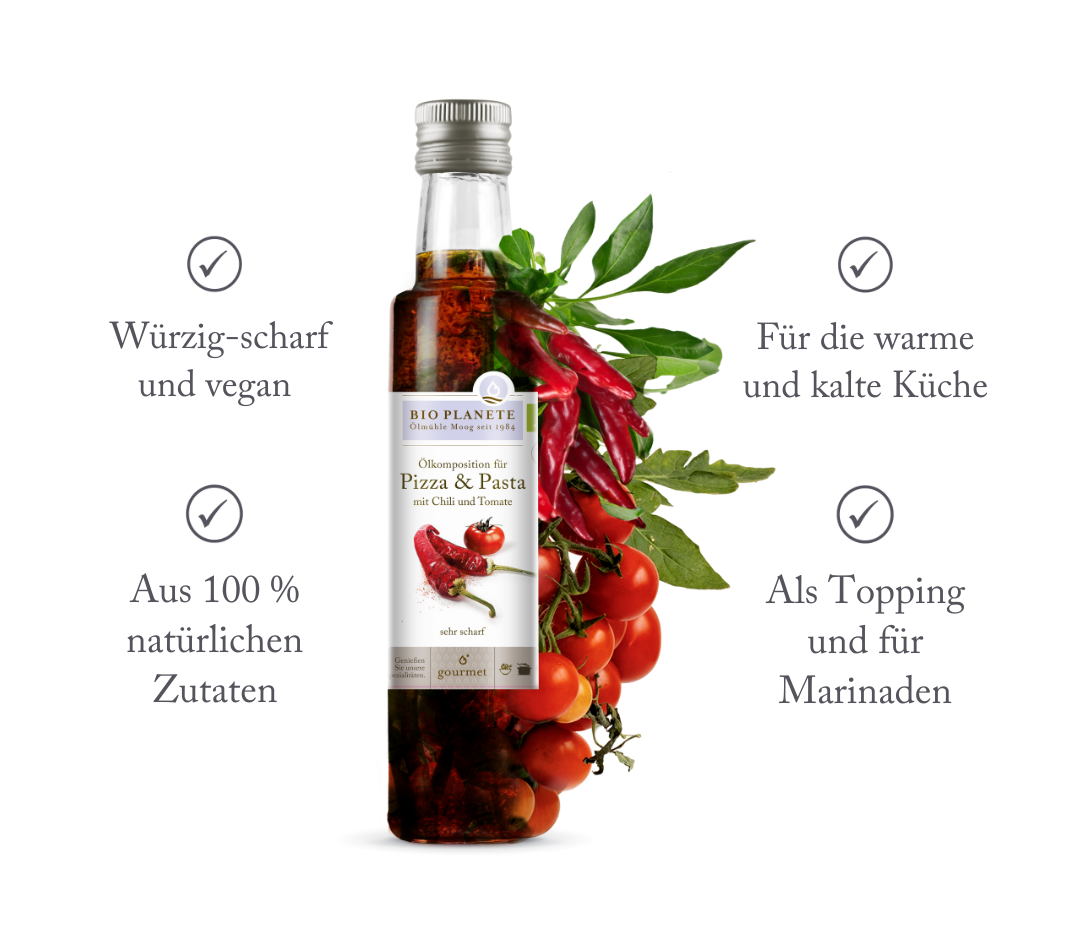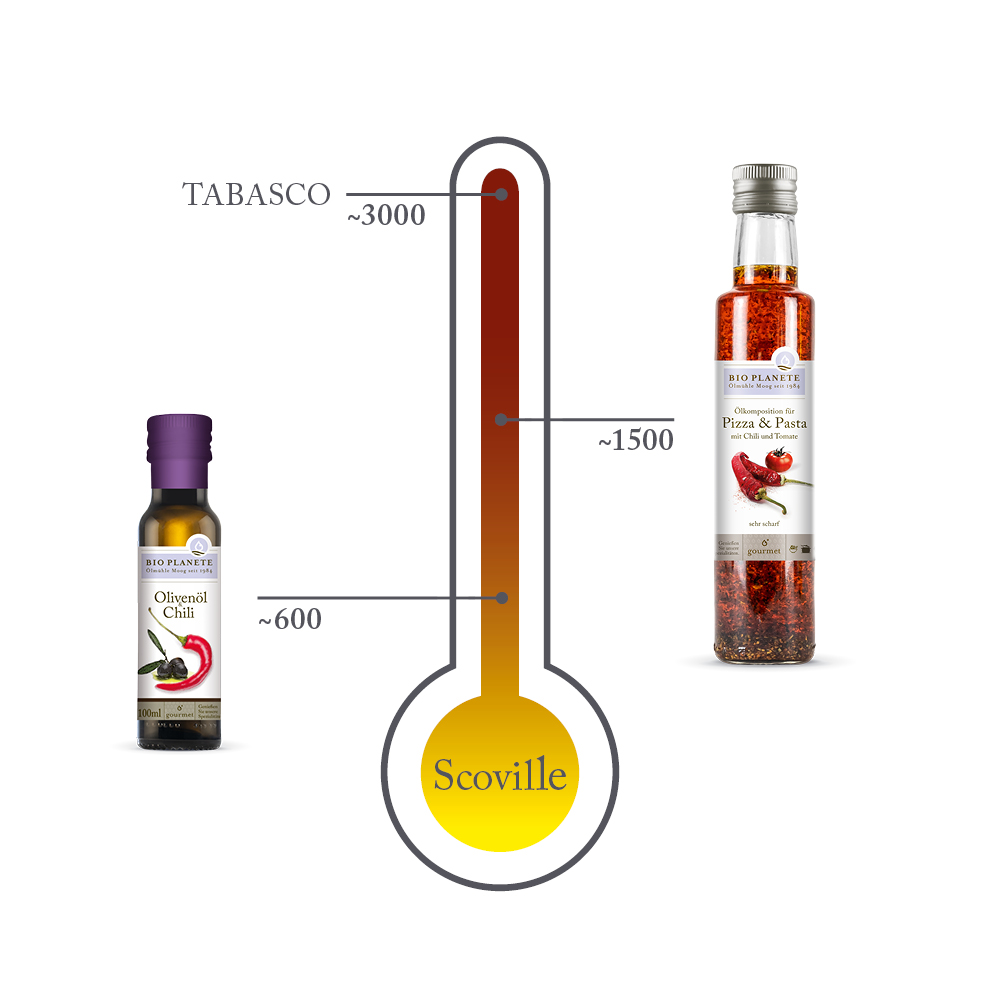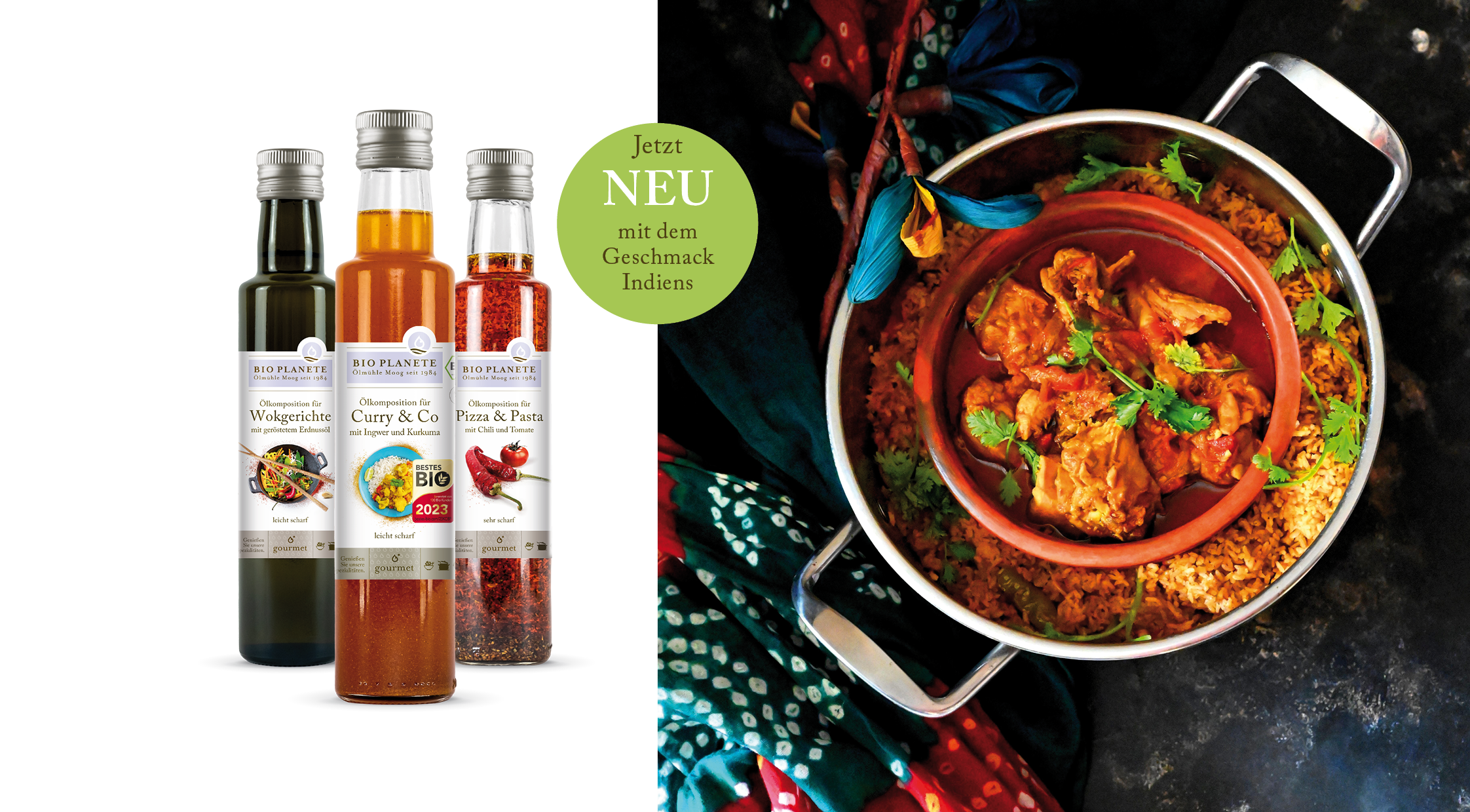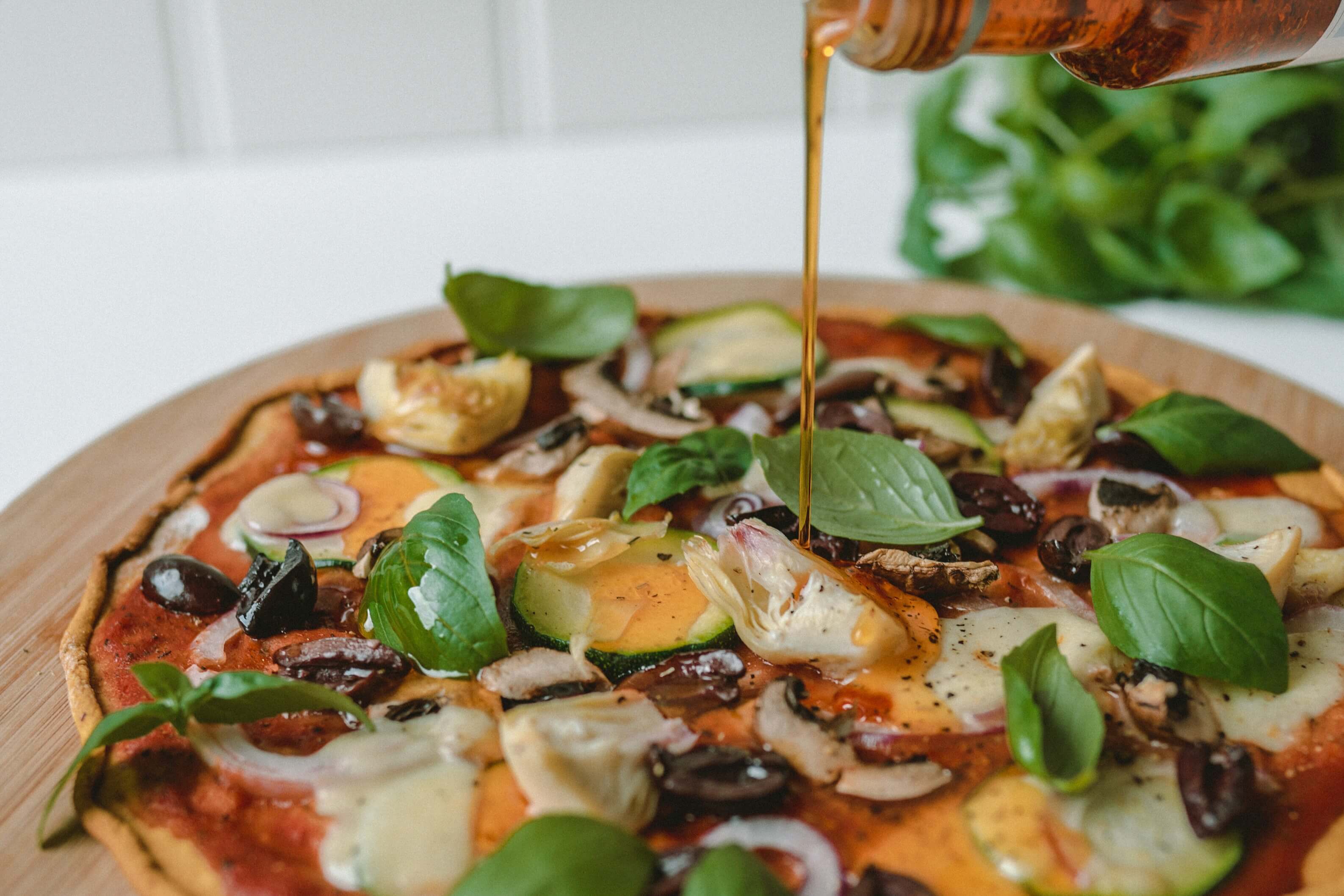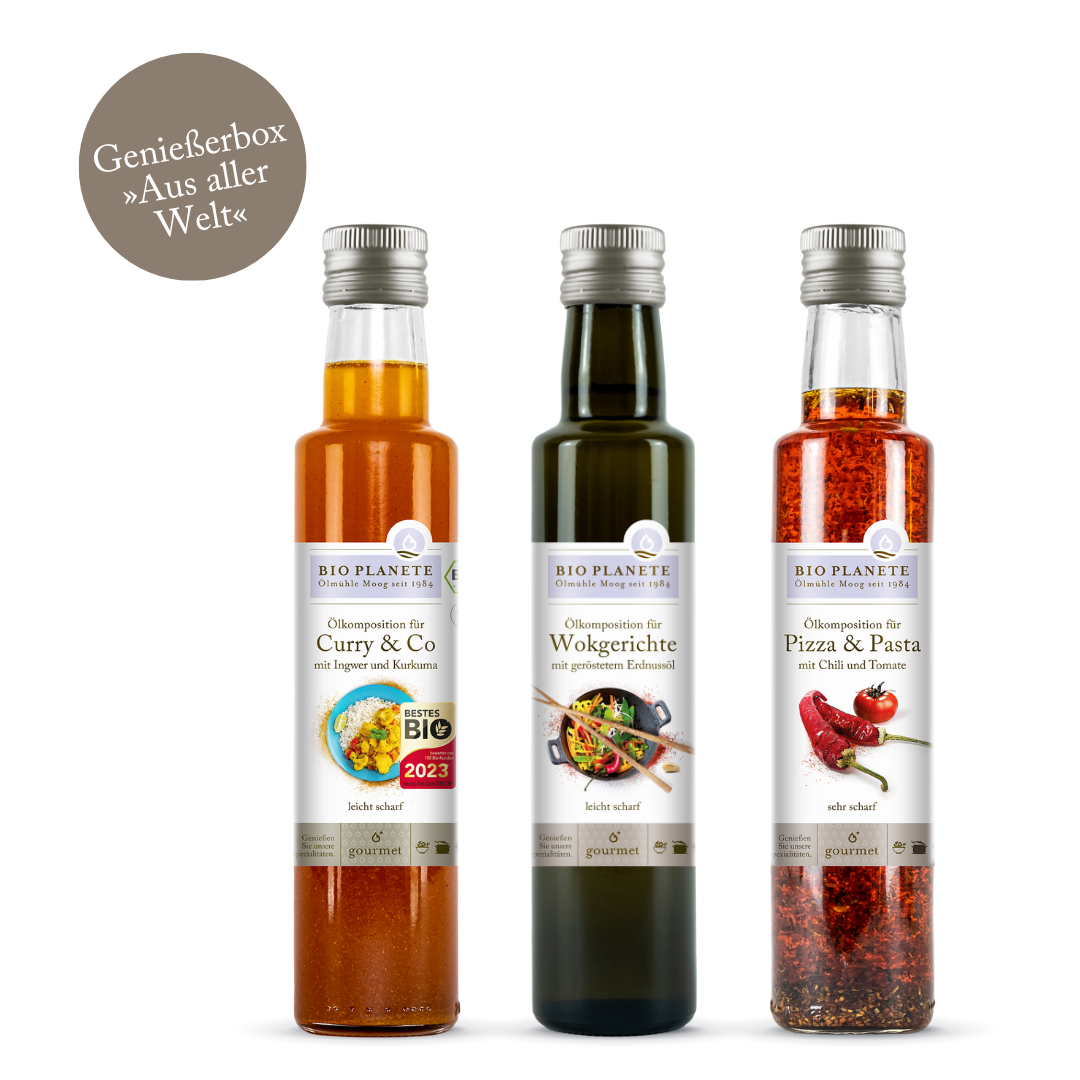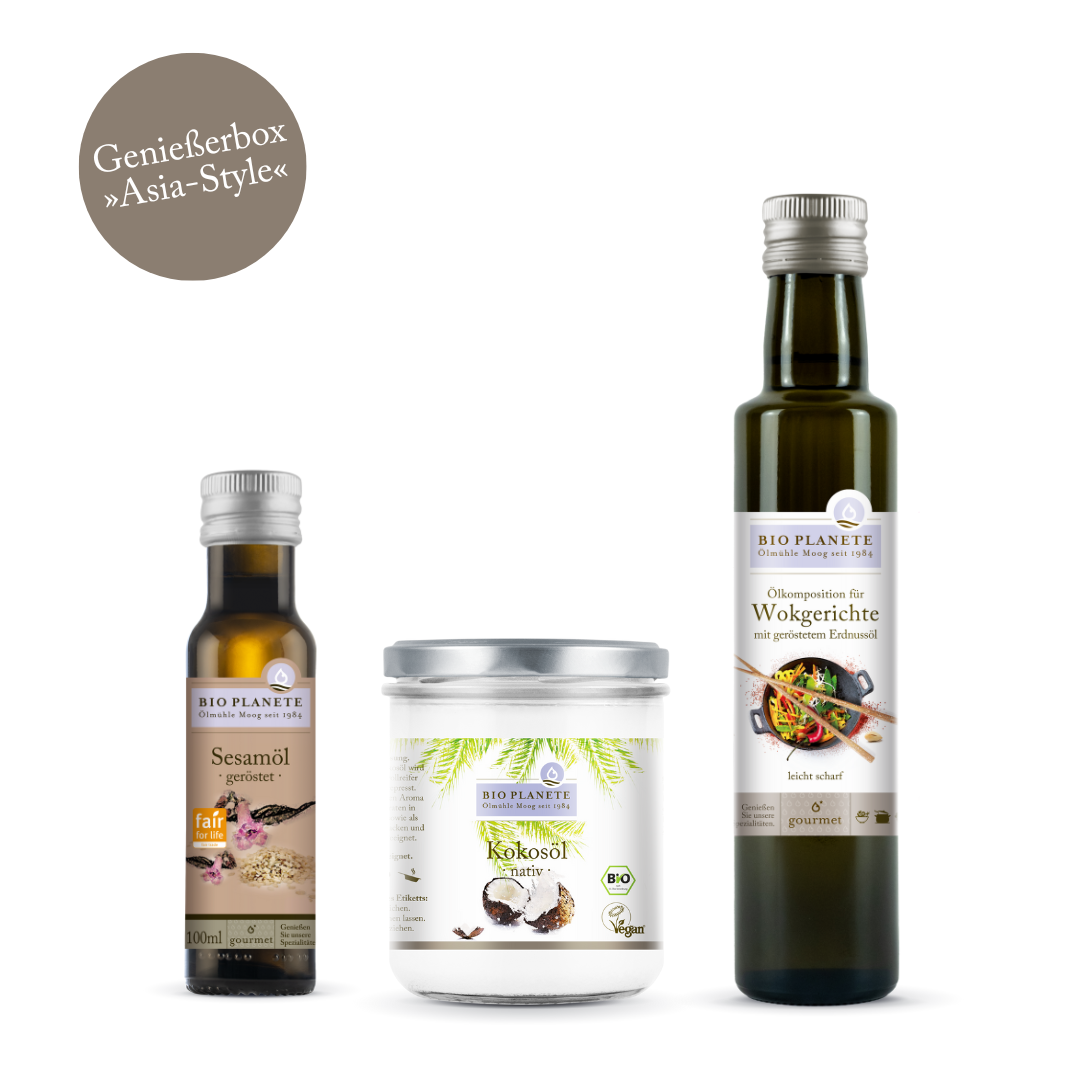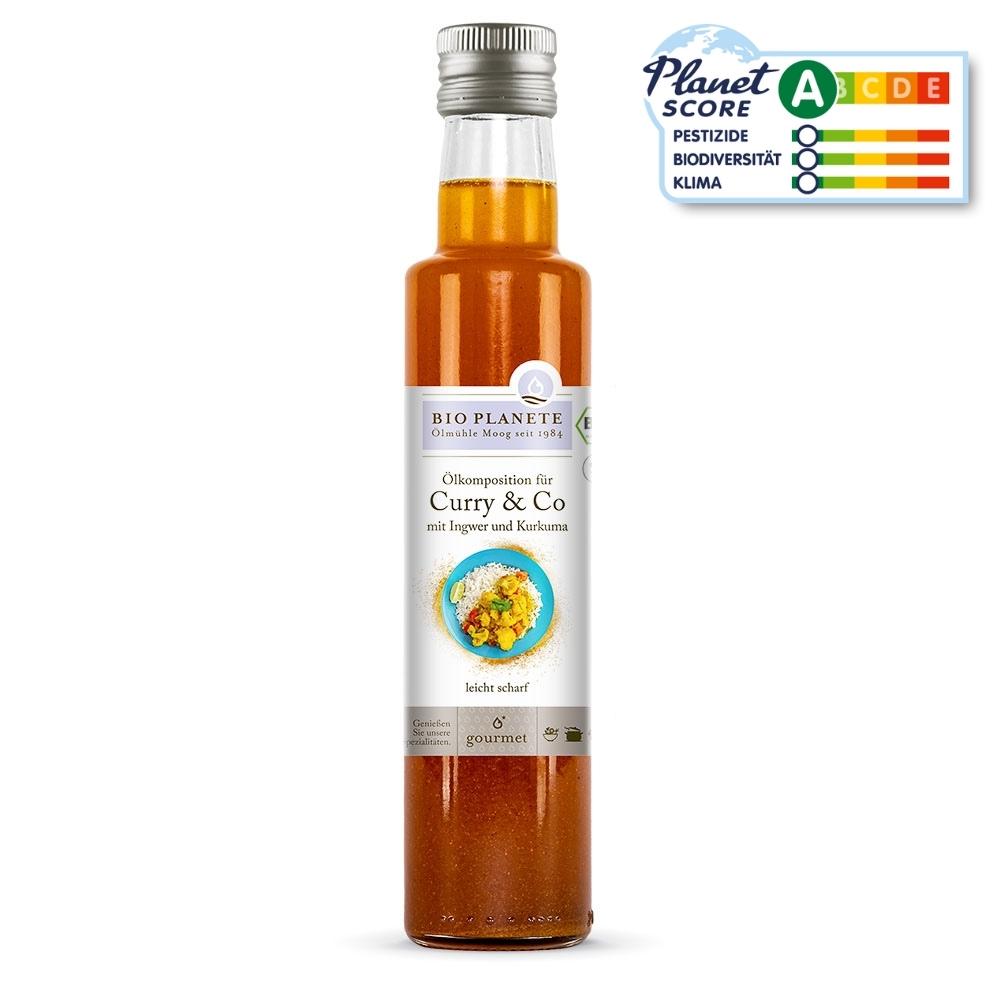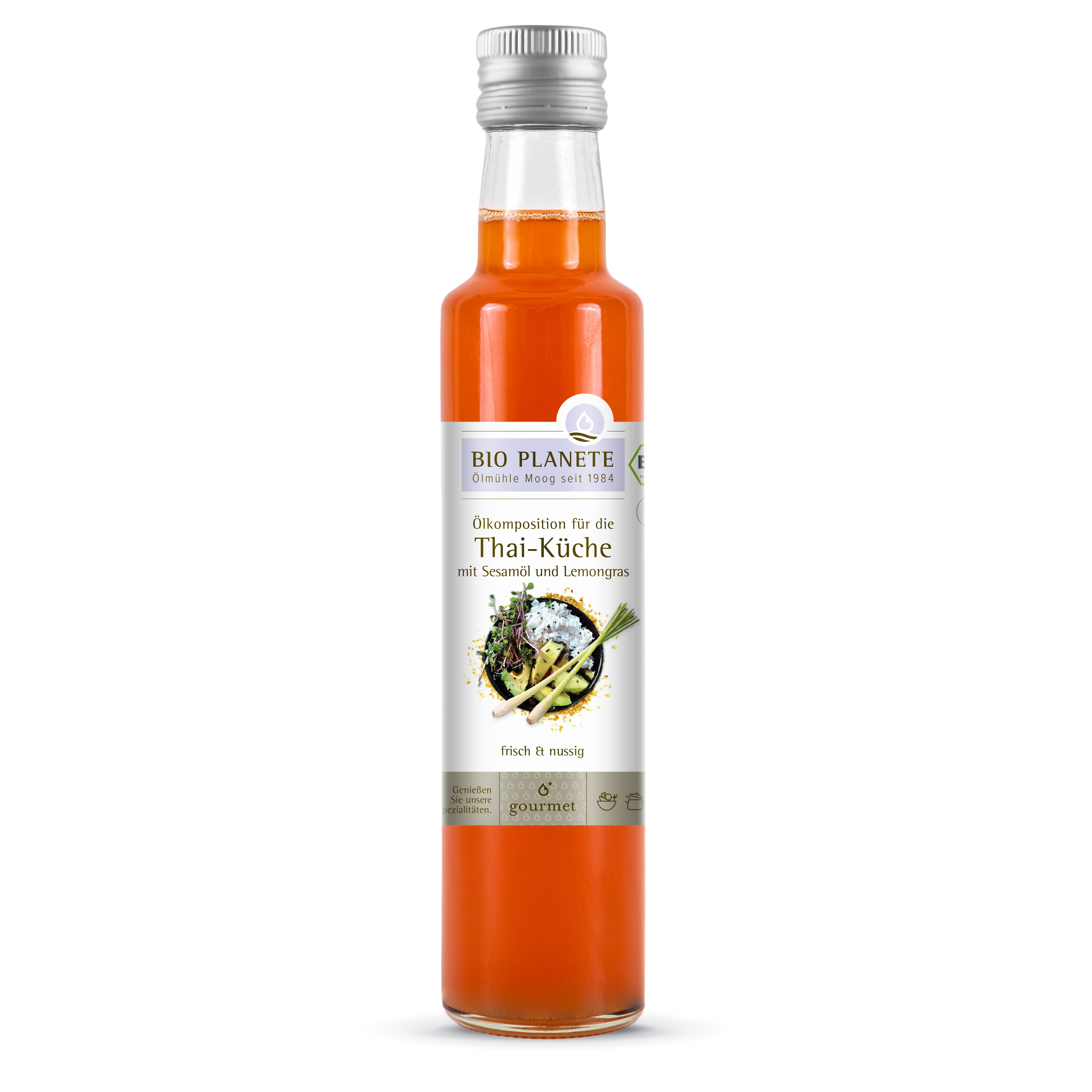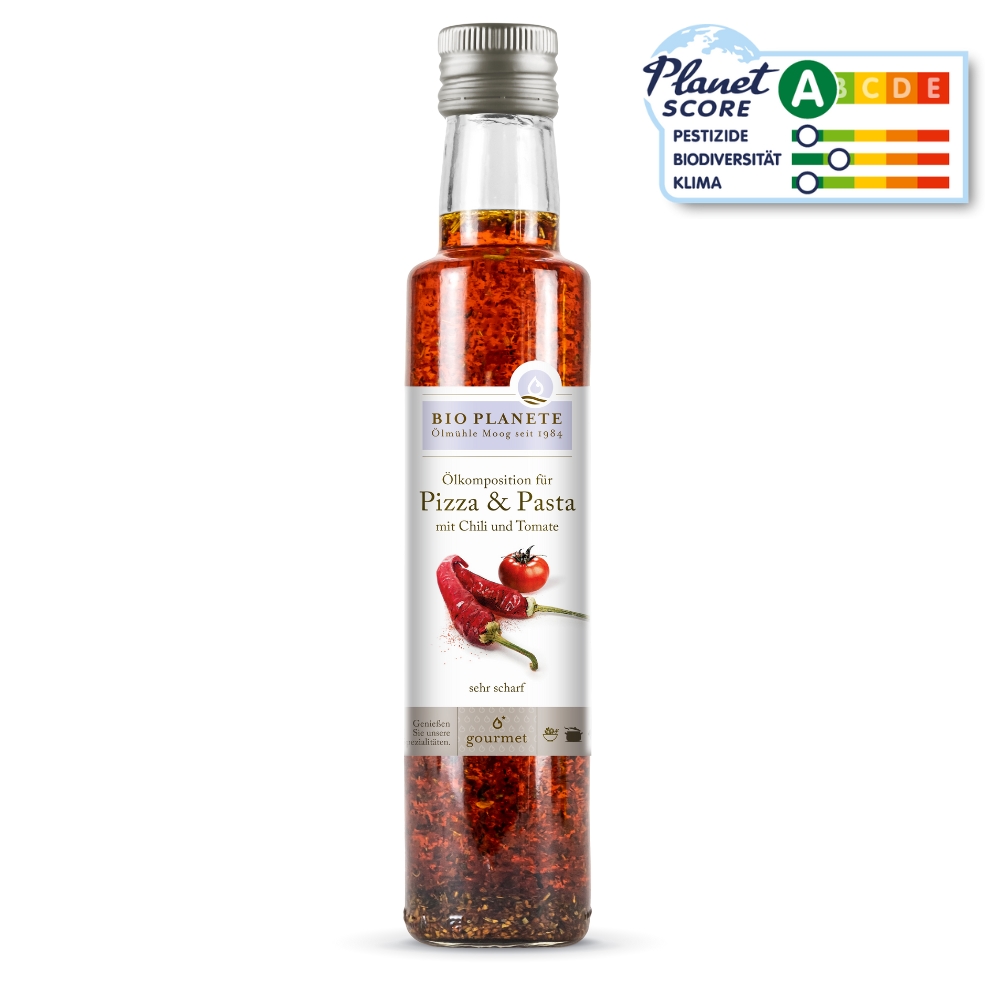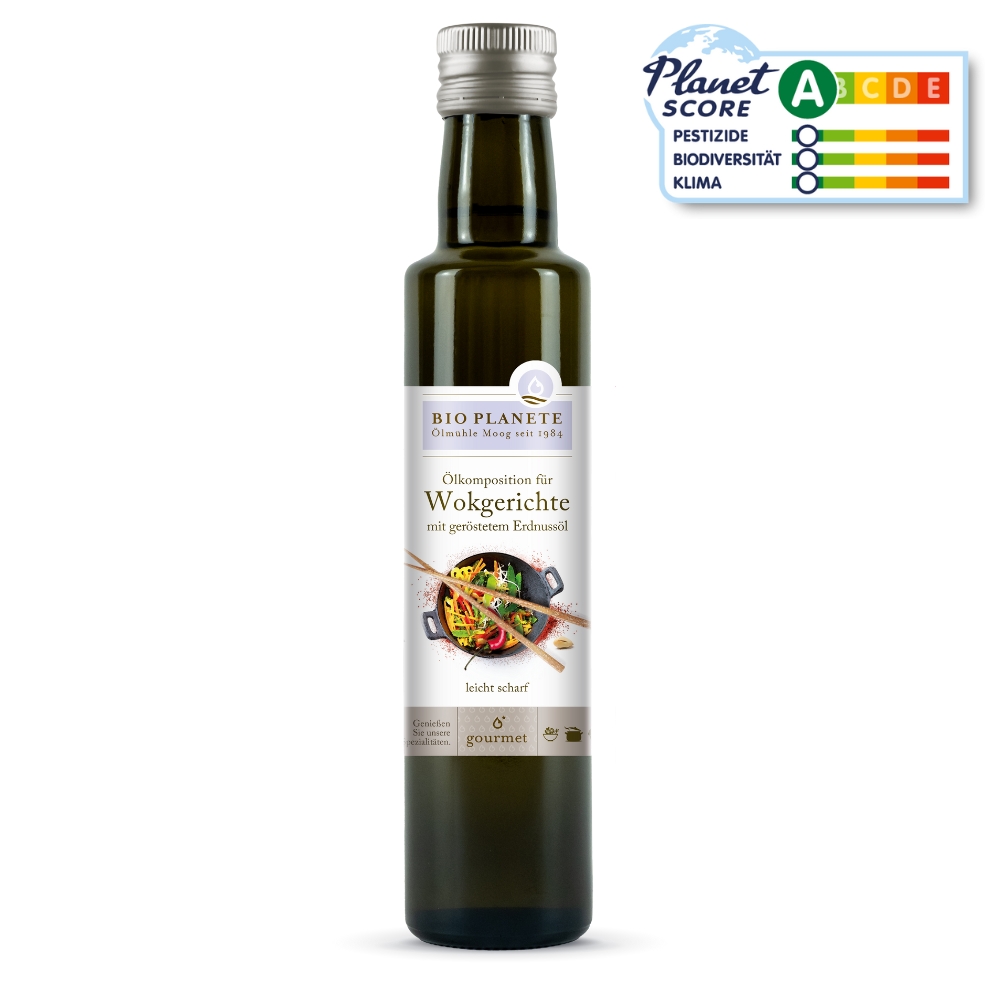
Holen Sie sich italienisches Flair in Ihre Küche
Die vegane Pflanzenölmischung vereint Oliven- und Sonnenblumenöl mit Chili- und Knoblauchextrakt sowie einer Kräuter-Tomaten-Mischung. Sie ist ideal für all jene, die gern neue Rezepte ausprobieren, ohne vorher eine Vielzahl an Zutaten besorgen zu müssen. Und der scharfe, aromatische Geschmack eignet sich wunderbar als Begleiter für Pizza- und Pasta-Gerichte, als Marinade für Antipasti, Ofengemüse und Gemüsechips.
6,49 €*
Sofort verfügbar, Lieferzeit: 3-5 Werktage
Von der Idee zum Produkt
Ein neues Öl im Regal ist für uns bei BIO PLANÈTE immer ein Grund zu feiern. Denn von der Idee bis zur Produktreife sind viele, viele Schritte nötig und Kollegen involviert. Eine wichtige Rolle spielt dabei unsere Abteilung Forschung & Entwicklung, zu der auch Melanie Baumgart gehört. Wir haben sie nach unserer Ölkomposition für Pizza & Pasta gefragt.
Melanie, wie ist die Idee zur neuen Ölkomposition entstanden?
Ideen entstehen bei uns ganz unterschiedlich! Wir machen Marktrecherchen und Trendforschung oder erhalten Vorschläge von Kunden oder Lieferanten. Ausschlaggebend für die Idee zur neuen Ölkomposition für Pizza & Pasta war der spürbare Trend, frisch, aber ohne großen Aufwand zu kochen, sowie die zunehmende Lust, Gerichte anderer Länder auszuprobieren. Unser Ziel war es also, Geschmäcker aus aller Welt in Flaschen zu füllen.
Wie würdest Du den Geschmack der Ölkomposition für Pizza & Pasta beschreiben?
Typisch mediterran. Oregano, Thymian, Rosmarin, Basilikum und Majoran sind fein aufeinander abgestimmt. Dazu kommen Tomaten und eine Mischung aus Sonnenblumen-, Oliven-, Chili- und Knoblauchölen. Das ist wie eine Reise in den Süden.

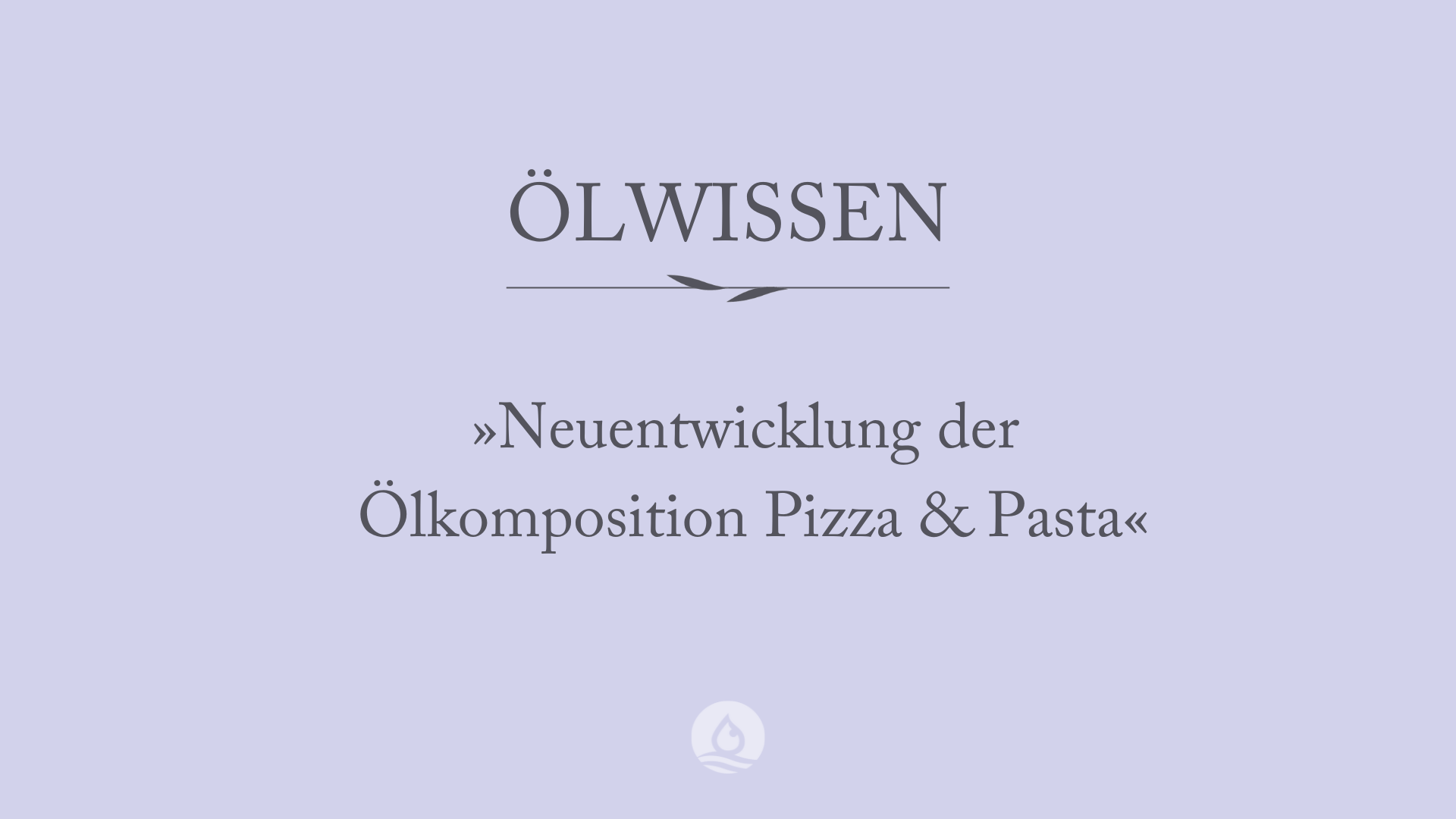
100% natürlich Genießen
Für die BIO PLANÈTE Ölkomposition für Pizza & Pasta vereinen wir erlesene Gewürze und feines Chiliextrakt zu einer aromatisch-scharfen Komposition. Dabei verzichten wir komplett auf die Beigabe von zusätzlichen ätherischen Essenzen - 100 % natürlich und 100 % bio!
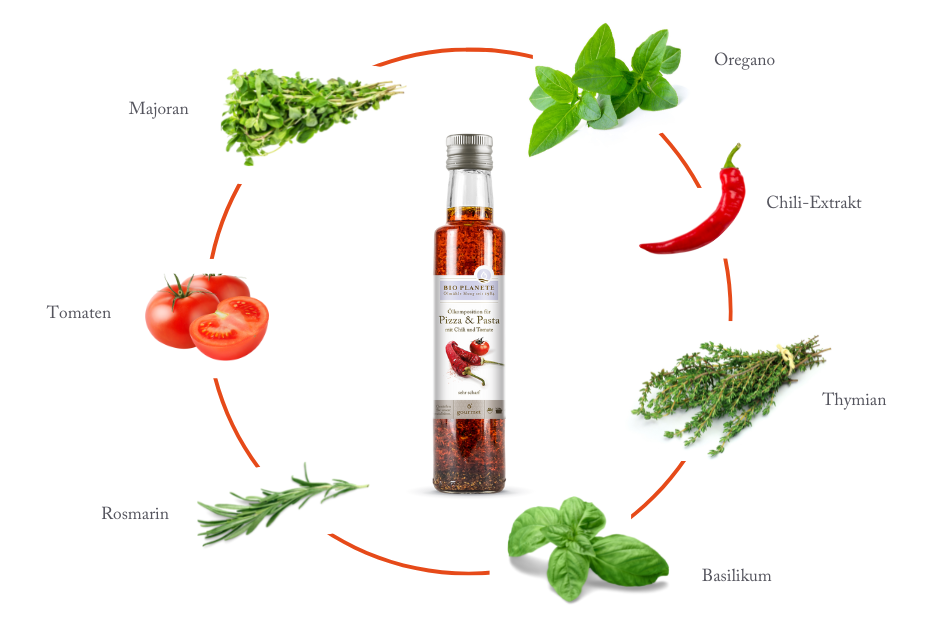
Einordnung in der Scoville-Skala
Die Schärfe bei unserer Ölkomposition für Pizza & Pasta wird ausgelöst durch den natürlichen Inhaltsstoff im Chili-Extrakt, dem Capsaicin. Das reizt die Schmerzrezeptoren der Schleimhaut und löst damit einen Schmerz aus, den wir als Schärfe wahrnehmen.
Gemessen wird diese Schärfe in einer Skala, die der US-Pharmakologe Wilbur L. Scoville Anfang des 20. Jahrhunderts zur Abschätzung der Schärfe von Früchten der Paprikapflanzen entwickelte – der Scoville-Skala.
Zum Vergleich: Tabasco-Sauce hat einen Scoville-Wert von bis zu 3.000, unser BIO PLANÈTE Olivenöl & Chili etwa 600 und unsere Ölkomposition für Wokgerichte etwa 250. Reines Capsaicin hat übrigens einen Scoville-Wert von 16.000.000.
Hinweis: Die besondere Ölkomposition ist mit einem Scoville-Wert von etwa 1.500 sehr scharf und sollte vorsichtig dosiert werden.

Umstrittene Persönlichkeit – Christoph Kolumbus
Die begehrten Gewürze, wie beispielsweise schwarzer Pfeffer und Zimt, waren rar und oft nur den Reichen vorbehalten. Auf ihrem weiten Weg von Indien galt es, hohe Zölle für die Waren zu zahlen. Da lag der Gedanke nahe, Indien direkt auf dem Seeweg anzusteuern. Die kastilische Krone beauftragte den Seefahrer Christoph Kolumbus, dieses zu wagen und so stach er am 03.08.1492 in See.
Erstens kommt es anders und zweitens als man denkt
Was war geschehen?
Chili und Pfeffer – verwandte Pflanzen?
Kolumbus - Held oder Ausbeuter?
Und Indien wurde doch entdeckt
SCHNELL & VEGGIE
Entdecken Sie unsere Serie »Aus aller Welt«, die wir speziell für Liebhaber der schnellen und veganen Küche entwickelt haben. Mit den schmackhaften Ölen wollen wir die Lust am Kochen fördern, gleichzeitig Inspirationen aus aller Welt für gesunde Gerichte liefern und einen Anlass bieten, um Familie, Freunde und Bekannte spontan zum gemeinsamen Essen zu versammeln.
Zu den Ölen »Aus aller Welt«

